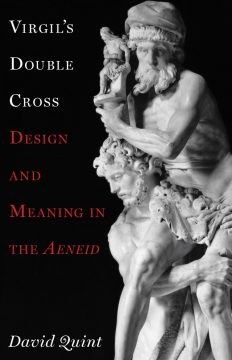Nandini Pandey at Marginalia:
 What a joy it is to journey back into the Aeneid with Quint as our Sibyl. The latter warns Aeneas that in Italy he will wage wars as cruel as Troy’s, again over a stolen bride, but with aid from a Greek city. She thus articulates from within the poem its famous division into two halves, the second a repetition and reversal of the Iliad. No less inspired, but far more meticulously detailed, is Quint’s structural pronouncement: that chiasmus shapes the Aeneid’s architecture on a fractal scale, from its microscopic details to the thousand-year sweep of its plot. Expanding on this figure’s normative definition as an A-B-B-A arrangement of words, Quint elucidates a range of intertextual symmetries and reversals by which, in his argument, Vergil “double-crosses” his own epic. This grand unified theory seeks to interlink and explain the poem’s meaning, structure, and notorious “ambivalence”: the self-questioning tendencies that have prevented easy interpretation, and divided the poem’s readers, since its publication.
What a joy it is to journey back into the Aeneid with Quint as our Sibyl. The latter warns Aeneas that in Italy he will wage wars as cruel as Troy’s, again over a stolen bride, but with aid from a Greek city. She thus articulates from within the poem its famous division into two halves, the second a repetition and reversal of the Iliad. No less inspired, but far more meticulously detailed, is Quint’s structural pronouncement: that chiasmus shapes the Aeneid’s architecture on a fractal scale, from its microscopic details to the thousand-year sweep of its plot. Expanding on this figure’s normative definition as an A-B-B-A arrangement of words, Quint elucidates a range of intertextual symmetries and reversals by which, in his argument, Vergil “double-crosses” his own epic. This grand unified theory seeks to interlink and explain the poem’s meaning, structure, and notorious “ambivalence”: the self-questioning tendencies that have prevented easy interpretation, and divided the poem’s readers, since its publication.
more here.
